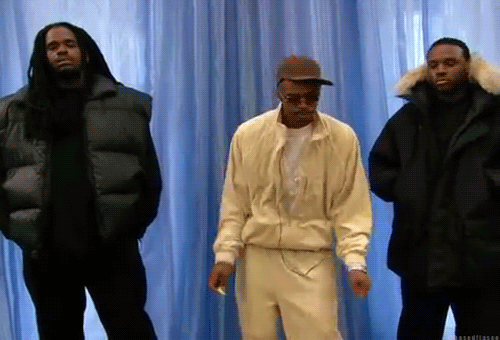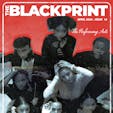BY: THERY SANON

The last time we really saw Dave Chappelle on a main stage, it was 2004. Chappelle was doing very well for himself at that time. From his movies and standup sets to the great success of "Chappelle's Show," Dave Chappelle was arguably one of the best comedians of the late 90s-early 2000s.
His unique brand of comedy has always been a good mix of edgy subject matter and social commentary. While this may seem commonplace nowadays, back in the early 2000s, this brand of humor was often met with harsh criticism for being "too much." After several years of these critiques and an intense battle with Comedy Central over "Chappelle's Show," Dave decided to walk away from it all in 2007 and pretty much fell off of the face of the earth.
Now, fast-forward to 2017. Other black sketch shows like "Key and Peele" have had incredible success, racial tensions are high in America and Donald Trump is now our president. While that may sound like a weird combination of things, they all come together to create the perfect framework for Dave Chappelle to make a comeback. Let's be real, 2017 has been a circus so far. Nobody knows what's going on and it's hard to know what's real and what's fake. The thing is, Dave Chappelle has been cracking jokes about times like these since the 2000s. It's only fitting that he decided that now was the time for him to come back into the spotlight.
This new Netflix production is a "collection" of new stand-up sets that Chappelle has been performing across the country this year. As a good starter, Netflix has given us two episodes titled "The Age of Spin: Live at the Hollywood Palladium," and "Deep in the Heart of Texas: Live at Austin City Limits." These two sets are completely different from one another, with each providing a unique look into the mind of Dave Chappelle.
"The Age of Spin" is a strong return to form for Dave. After a great introduction narrated by Morgan Freeman, Dave immediately hops back into the spotlight like he never left. The whole intro to this set is arguably the strongest point of the whole first episode, where Chappelle basically shorthands what happened in his absence. Pulling no punches, he discusses his "triumphant" exit from Comedy Central, how he got to relax for a little and even his anger at the fact that he "got to watch Key and Peele do [his] damn show every night." It was an incredible update that gave us an idea of what really happened to Dave in his time off. The set itself revolved around four stories about the four different times Dave Chappelle met O.J. Simpson. The best part about these stories were that each one took place at a different point in their careers. From meeting O.J. and his wife to running into him at a party years after the trial, Chappelle chronicles these events with all of the shtick and jokes that you could possibly imagine. His pacing throughout is incredible as well, with each of these stories serving as bookends for the longer streams of jokes he was telling. While a great stand-up in itself, "The Age of Spin" feels more like a warm up for his second set, "Deep in the Heart of Texas."
It becomes very clear what kind of show "Deep in the Heart of Texas" is going to be about five minutes into the set when Chappelle starts off with a story about someone throwing a banana at him on stage. This particular episode is more vintage Dave Chappelle. Dave goes to Austin, Texas, hops on stage in front of a crowd that is basically all whites from the south and proceeds to tell jokes about the complex relationship between black people and white people in America. This set was more aggressive, with jokes about racism, "rare moments of racial solidarity" and many other taboo topics taking center stage. It is very difficult as a comedian to find the proper line between "edgy" and "offensive," but Dave Chappelle has always been able to cross that line in a way that makes "offensive" not really feel so offensive. "Deep in the Heart of Texas" is a more energetic piece that reminds us of classic, 2000s Chappelle. Some of his best work has come from laughing at the struggles of society and 2017 has given him a whole new wave of content to work with.
One major thing to note about these specials is that they are, as Chappelle puts it, not for the faint of heart. There is a lot of stuff in here for people to get offended by. Nobody was really safe from Dave this time around. Recurring topics included rape, racism, being LGBTQ and police interactions. While these jokes were hit-and-miss, there were definitely more hits than misses and little to almost no "cringe" moments (aside from the Bill Cosby section, which although very tasteful, will be a hard sell for most). But that's the thing, Dave Chappelle has done skits about a Black white supremacist, a white family with the last name "Niggar" (guess how its pronounced) and even ones about a group of pimps going back in time to end slavery. His most controversial work is some of his best. My thing is, if you were a Dave Chappelle fan prior to these specials being released, nothing here is going to shock you. In a world full of trigger warnings, Dave's just going for it.

(giphy)
Well, I think it's safe to say that Dave Chappelle is back. Both of these specials were incredible and so far have been received well by everyone. I hope that we're not waiting ten years for the next one. The only real question moving forward is what's next for Dave Chappelle? The game is different now, but in a way that gives Dave the freedom to do more of what he used to do. While nobody knows what he's up to, the hope is that we will all find out soon enough. Welcome back, Dave, you've been missed.


